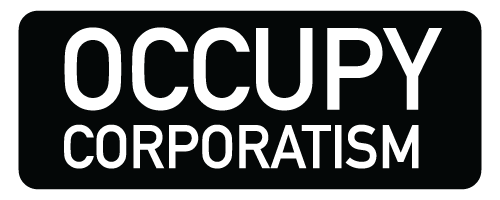The Department of Defense (DOD) has been interested in Disney Amusement Parks for decades. Known as Operation Mickey Mouse, the DOD has been studying Disney’s use of technology and coercion techniques. The DOD has also been working in conjunction with Disney to collect information on Beta testing operations that the popular theme park uses on their customers. Best of all, who would ever suspect Disney of being a front for the US government?
Through the Freedom of Information Act, the Disney Corporation hands over to the DOD all data on their customers. The DOD has an overabundance of information on the general public going back decades thanks to their relationship with Disney. After the DOD analyses and profiles their data from Disney, it is ready to be used by the US government for whatever purposes they deem fit.
Within the Disney walls and on their cruise ships, a separate digital monetary system is used. Customers trade their paper money for a digital card or voucher to purchases goods and services. On the cruise ship alone, the value of the digital Mickey money is determined prior to boarding. The card can be used at the ship, as well as at designated ports of call where the ship docks. As a programming technique, this digital money as replacing paper dollars conditions customers to think this idea is superior to carrying cash. This is reminiscent of the push of debit cards by banks in the 90s.
The small cities Disney has created through their compound, although seemingly harmless, can harness quite a bit of private information on unsuspecting customers. All movements of patrons are tracked and traced through a myriad of cameras strategically placed throughout the theme parks.
Facial recognition technology is a part of Disney’s new cruise liners. Moving Art lines the walls of the ship to entertain the passengers. This pictures move in response to the passenger’s facial movements, ensuring that the same sequence will not play twice. Although this may entertain, the passenger’s facial movements are being recorded by the computers within the pictures at all times.
Disney’s private island, Castaway Cay, uses an array of photographs taken of the passengers, with or without their permission or prior knowledge. When a passenger wants to purchase one of these photographs, they use an encoded voucher (digital Mickey money). The facial recognition software works much like Facebook’s new photo tag application. Then the passenger can choose to have an album created through the use of this technology. Photos, regardless of whether or not they are sold to passengers, are entered into a database for future use. Because the photographs are the legal property of Disney, they can be used at the corporation’s discretion.
Disney theme parks became the first to use biometrics at their ticket entrances.
According to Janel Pisorchik, Director of Business Operations at Accesso (a Florida based electronic ticketing and eCommerce solutions company):
Disney was the first theme park to introduce Biometrics to the entrance process. The initial type of technology used was hand geometry. This was an effective deterrent to help decrease the number of tickets from being resold. However, from an operational perspective, explaining the enrollment & verification process to the guests entering the parks was a little challenging.
The team was tasked with finding new technology and then focusing on the entrance process. The key components were speed, accuracy, and ergonomics of the unit. During one of the many biometrics related projects, I realized I am what is called a “goat.” I have one finger that does not have a clearly defined fingerprint due to a childhood injury. As you can imagine, I was leveraged for a variety of testing purposes.
It’s amazing to see the progress Disney has made in this field, now leveraging Biometrics for all ticketed media coming through the entrances. Walt Disney World is the largest single-site Biometric installation in the world.
The data collecting Disney conducts on their customers with the aid of this technology was neglected by Pisorchik.
The Electronic Frontier Foundation (EEF) is a group of concerned citizens who have readily voiced their misgivings about Disney’s biometrics programs.
On the EFF fact sheet on biometrics, the group states:
“Biometric identification is often overkill for the task at hand. It is not necessary to identify a person (and to create a record of their presence at a certain place and time) if all you really want to know is whether they’re entitled to do something or be somewhere. When in a bar, customers use IDs to prove they’re old enough to drink, not to prove who they are, or to create a record of their presence.”
Disney maintains that they are concerned about fraud and ticketing crimes. However, Disney records all data they collect on their customers, making their argument seem more like a thin veil to mask a hidden agenda. In our digital age, who else might be able to gain access to the millions of faces, fingerprints and other data Disney keeps on file in their databases?
The EFF warns:
“If you lose a credit card, you can cancel it and get a new one. If you lose a biometric, you’ve lost it for life. Any biometric system must be built to the highest levels of data security, including transmission that prevents interception, storage that prevents theft, and system-wide architecture to prevent both intrusion and compromise by corrupt or deceitful agents within the organization.
“Vendors and scanner operators may say that they protect privacy in some way, perhaps by hashing the biometric data or designing the database to enforce a privacy policy. But the end user typically has no way to verify whether such technical protections are effective or implemented properly,” continues the EFF’s warning. “End-users should be able to verify any such claims, and to leave the system completely if they are not satisfied. Exiting the system, of course, should at least include the expungement of the end-user’s biometric data and records.”
To the average American, a trip to Disney is a vacation of a lifetime. This makes the theme parks the perfect cover for the DOD and other US government agencies to continuously collect data on the general public through their unwitting participation.
It is true.
You are being tracked, traced and data based on the most wonderful place on Earth.










